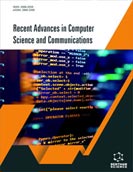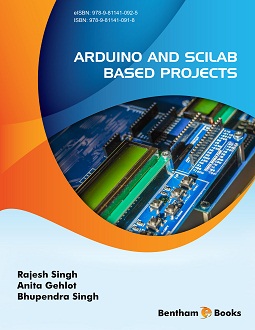Preface
Page: i-i (1)
Author: Parul Dubey*, Arvind Kumar Tiwari* and Rohit Raja*
DOI: 10.2174/9789815165821123010001
Introduction To Cloud Computing and AWS
Page: 1-23 (23)
Author: Parul Dubey*, Arvind Kumar Tiwari* and Rohit Raja*
DOI: 10.2174/9789815165821123010002
PDF Price: $15
Abstract
This chapter offers an in-depth exploration of cloud computing,
encompassing various deployment models and services. It sheds light on the pressing
concern of personal data privacy, as cloud technology enables data to traverse
geographical boundaries, disregarding local regulations. The evolution of AWS since
2000 takes the center stage, emphasizing key elements such as regions, availability
zones, and data centers. By providing comprehensive insights, the chapter equips users
with the necessary knowledge to effectively navigate the intricacies of AWS. It also
elucidates the AWS shared responsibility model, ensuring users understand their own
responsibilities and those of AWS. Furthermore, the chapter focuses on six core
competencies, enabling customers to fully harness the potential of AWS's offerings.
This multifaceted chapter serves as a comprehensive guide, empowering readers to
grasp the complexities and opportunities of cloud computing with AWS.
Identity and Access Management in AWS
Page: 24-42 (19)
Author: Parul Dubey*, Arvind Kumar Tiwari* and Rohit Raja*
DOI: 10.2174/9789815165821123010003
PDF Price: $15
Abstract
This chapter provides a comprehensive exploration of Identity and Access
Management (IAM) in AWS. It delves into the detailed processes of creating IAM
users, roles, and setting policies, emphasizing their significance in safeguarding the
AWS account and its users. IAM proves invaluable in managing multiple users within
a single account. The chapter also highlights the crucial role of Multi-Factor
Authentication (MFA) in enhancing account security, particularly when collaborating
with AWS Cloud Service Providers (CSP). Overall, this chapter serves as a
fundamental guide for understanding and implementing IAM, establishing a strong
foundation for working effectively within the AWS ecosystem.
Amazon EC2 Instance
Page: 43-64 (22)
Author: Parul Dubey*, Arvind Kumar Tiwari* and Rohit Raja*
DOI: 10.2174/9789815165821123010004
PDF Price: $15
Abstract
This chapter offers comprehensive coverage of EC2 (Elastic Compute
Cloud) in AWS, encompassing instance types, pricing, and other essential aspects. It
provides detailed step-by-step instructions for setting up an EC2 instance and initiating
work on the AWS platform. By following these procedures, readers gain the necessary
knowledge and practical guidance to effectively utilize EC2 and leverage other
capabilities offered by AWS. This chapter serves as a valuable resource for individuals
seeking to navigate the intricacies of EC2 and fully harness the potential of AWS
services.
Storage Options with Amazon EC2 Instance
Page: 65-78 (14)
Author: Parul Dubey*, Arvind Kumar Tiwari* and Rohit Raja*
DOI: 10.2174/9789815165821123010005
PDF Price: $15
Abstract
This chapter provides an overview of the storage options available with EC2
instances, namely EC2 Instance storage, EBS, EFS, and Amazon S3. It focuses on
illustrating the creation of EBS volumes and attaching them to EC2 instances. The
chapter highlights the unique features and uses cases of each storage option,
empowering readers to make informed decisions based on their needs. By following the
step-by-step instructions, readers gain practical guidance on configuring and utilizing
EBS storage effectively within the EC2 environment. Overall, this chapter serves as a
valuable guide for optimizing storage configurations and maximizing the benefits of
EC2 instances in AWS.
Load Balancing and Auto Scaling in AWS
Page: 79-96 (18)
Author: Parul Dubey*, Arvind Kumar Tiwari* and Rohit Raja*
DOI: 10.2174/9789815165821123010006
PDF Price: $15
Abstract
This chapter provides a thorough introduction to Autoscaling and Elastic
Load Balancing (ELB) in the AWS cloud. It highlights the benefits of these services,
which simplify workflows and automate tasks. The chapter offers an in-depth overview
of ELB and Autoscaling, covering their basic uses and providing hands-on experience.
By understanding and utilizing these services, users can optimize resource allocation,
handle traffic fluctuations, and enhance application performance. This chapter serves as
a comprehensive guide for effectively implementing Autoscaling and Elastic Load
Balancing in the AWS environment.
Amazon Simple Storage Service
Page: 97-114 (18)
Author: Parul Dubey*, Arvind Kumar Tiwari* and Rohit Raja*
DOI: 10.2174/9789815165821123010007
PDF Price: $15
Abstract
This chapter provides a comprehensive overview of Amazon S3, a crucial
service offered by AWS. It emphasizes the practicality of working with AWS and
highlights the importance of understanding and utilizing Amazon S3 in various
projects. The chapter covers the basics of AWS S3, including fundamental concepts
and functionalities. Additionally, it explores advanced topics such as versioning and
different Amazon S3 storage classes, enabling readers to maximize the potential of S3
in future endeavors. By equipping readers with the necessary knowledge and skills, this
chapter serves as a valuable resource for effectively utilizing Amazon S3 within the
AWS ecosystem.
AWS Databases and Analytics
Page: 115-131 (17)
Author: Parul Dubey*, Arvind Kumar Tiwari* and Rohit Raja*
DOI: 10.2174/9789815165821123010008
PDF Price: $15
Abstract
This chapter provides an in-depth exploration of various databases available
within AWS. It focuses on two key databases, namely Amazon RDS and Amazon
Aurora, detailing their architecture and functionality. The chapter includes a
comprehensive guide to creating a new RDS database, covering all necessary details.
Additionally, the chapter introduces a section dedicated to data analytics in AWS. It
discusses essential components such as Glue, Redshift, and Quicksight, highlighting
their significance and use cases within the AWS ecosystem. By delving into the
intricacies of AWS databases and data analytics tools, this chapter equips readers with
the knowledge required to make informed decisions and effectively leverage these
services. It serves as a valuable resource for understanding the architecture, creation,
and practical applications of Amazon RDS, and Amazon Aurora, as well as data
analytics tools like Glue, Redshift, and Quicksight within AWS.
Compute Services in AWS
Page: 132-151 (20)
Author: Parul Dubey*, Arvind Kumar Tiwari* and Rohit Raja*
DOI: 10.2174/9789815165821123010009
PDF Price: $15
Abstract
This chapter provides a comprehensive study of container services,
specifically focusing on Docker. It includes a detailed comparison between Docker
implementation and virtual machines. The chapter offers an overview of various
container services provided by AWS, such as Amazon Elastic Container Service
(ECS), AWS Fargate, Amazon Elastic Container Registry, AWS Copilot, AWS Batch,
and Kubernetes. Additionally, the chapter explores Lambda, a serverless service
offered by AWS. It includes practical guidance on creating a lambda function. The
chapter also touches upon Lightsail, catering to readers with less experience in AWS.
By covering a wide range of topics, from Docker and container services to Lambda and
Lightsail, this chapter equips readers with the knowledge and practical skills necessary
to work effectively within the AWS ecosystem. It serves as a valuable resource for
understanding and utilizing container services, serverless computing, and AWS
services tailored for different user levels.
Cloud Integrations
Page: 152-165 (14)
Author: Parul Dubey*, Arvind Kumar Tiwari* and Rohit Raja*
DOI: 10.2174/9789815165821123010010
PDF Price: $15
Abstract
This chapter delves into the application integration services offered by
AWS, which proves particularly beneficial for microservices, distributed systems, and
serverless applications. These services facilitate seamless communication between
loosely related components. The chapter provides an overview of various AWS
integration services, emphasizing their importance in integration processes. Key topics
covered in this chapter include SQS (Simple Queue Service), SNS (Simple Notification
Service), Kinesis, Pinpoint, and Amazon MQ. Furthermore, the chapter offers practical
guidance through hands-on illustrations focused on SQS, allowing readers to gain
valuable experience in utilizing these services. By exploring these AWS application
integration services, readers can enhance the efficiency and effectiveness of their
integration processes. This chapter serves as a comprehensive guide for understanding
and utilizing services like SQS, SNS, Kinesis, Pinpoint, and Amazon MQ, enabling
seamless communication and integration within AWS environments.
Cloud Monitoring
Page: 166-185 (20)
Author: Parul Dubey*, Arvind Kumar Tiwari* and Rohit Raja*
DOI: 10.2174/9789815165821123010011
PDF Price: $15
Abstract
This chapter provides a comprehensive exploration of Amazon Web
Services (AWS) monitoring. It focuses on AWS CloudWatch and associated logs,
covering various aspects in detail. The chapter includes step-by-step instructions for
setting up CloudWatch alarms, working with CloudWatch logs, and monitoring
CloudTrail. Furthermore, the chapter delves into the AWS health check feature,
providing a deeper understanding of its significance. It highlights the importance of
both private health checks and the Service Health Dashboard, emphasizing their role in
ensuring system reliability and performance. By studying AWS monitoring tools and
features, readers gain insights into effectively monitoring their AWS resources and
applications. This chapter serves as a valuable resource for understanding and
implementing CloudWatch, CloudTrail, and AWS health checks, enabling users to
maintain a proactive and robust monitoring approach within the AWS environment.
References
Page: 186-191 (6)
Author: Parul Dubey*, Arvind Kumar Tiwari* and Rohit Raja*
DOI: 10.2174/9789815165821123010012
Subject Index
Page: 192-196 (5)
Author: Parul Dubey*, Arvind Kumar Tiwari* and Rohit Raja*
DOI: 10.2174/9789815165821123010013
Introduction
Amazon Web Services: A Comprehensive Guide for Beginners and Advanced Users is your go-to companion for learning and mastering AWS. It presents 10 easy-to-read chapters that build a foundation for cloud computing while also equipping readers with the skills necessary to use AWS for commercial projects. Readers will learn how to use AWS cloud computing services for seamless integrations, effective monitoring, and optimizing cloud-based web applications. What you will learn from this guide: 1. Identity and Access Management in AWS: Learn about IAM roles, security of the root account, and password policies, ensuring a robust foundation in access management. 2. Amazon EC2 Instance: Explore the different types of EC2 instances, pricing strategies, and hands-on experiences to launch, manage, and terminate EC2 instances effectively. This knowledge will help to make informed choices about pricing strategies. 3. Storage Options and Solutions: A detailed examination of storage options within Amazon EC2 instances. Understanding Amazon Elastic Block Store (EBS), Amazon Elastic File Storage (EFS), and more, will enhance your ability to handle data storage efficiently. 4. Load Balancing and Auto Scaling: Learn about different types of load balancers and how auto-scaling groups operate, to master the art of managing varying workloads effectively. 5. Amazon Simple Storage Service (S3): Understand S3 concepts such as buckets, objects, versioning, storage classes, and practical applications. 6. AWS Databases and Analytics: Gain insights into modern databases, AWS cloud databases, and analytics services such as Amazon Quicksight, AWS Glue, and Amazon Redshift. 7. Compute Services and Integrations: Understand the workings of Docker, virtual machines, and various compute services offered by AWS, including AWS Lambda and Amazon Lightsail, Amazon MQ and Amazon SQS. 8. Cloud Monitoring: Understand how to set up alarms, analyze metrics, and ensure the efficient monitoring of your cloud environment using Amazon CloudWatch and CloudTrail. Key Features: Comprehensive Introduction to Cloud Computing and AWS Guides readers to the complete set of features in AWS Easy-to-understand language and presentation with diagrams and navigation guides References for further reading Whether you're a student diving into cloud specialization as part of your academic curriculum or a professional seeking to enhance your skills, this guide provides a solid foundation for learning the potential of the AWS suite of applications to deploy cloud computing projects.






















